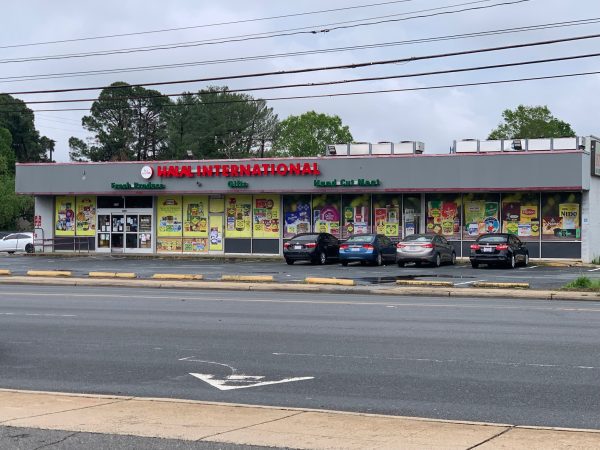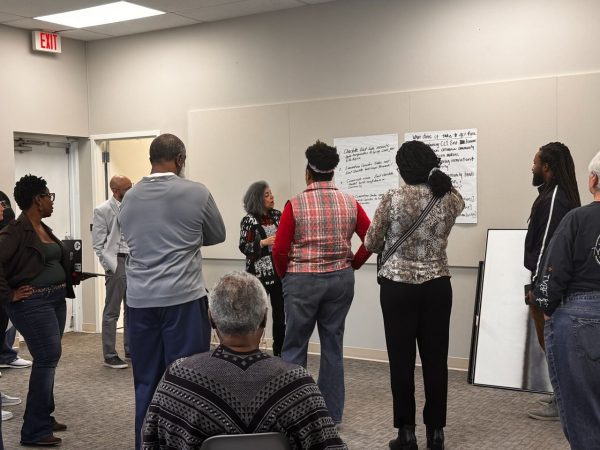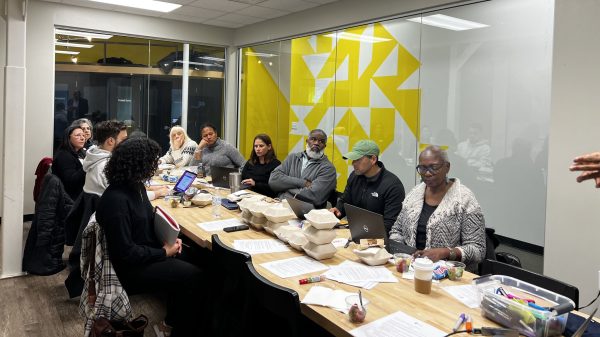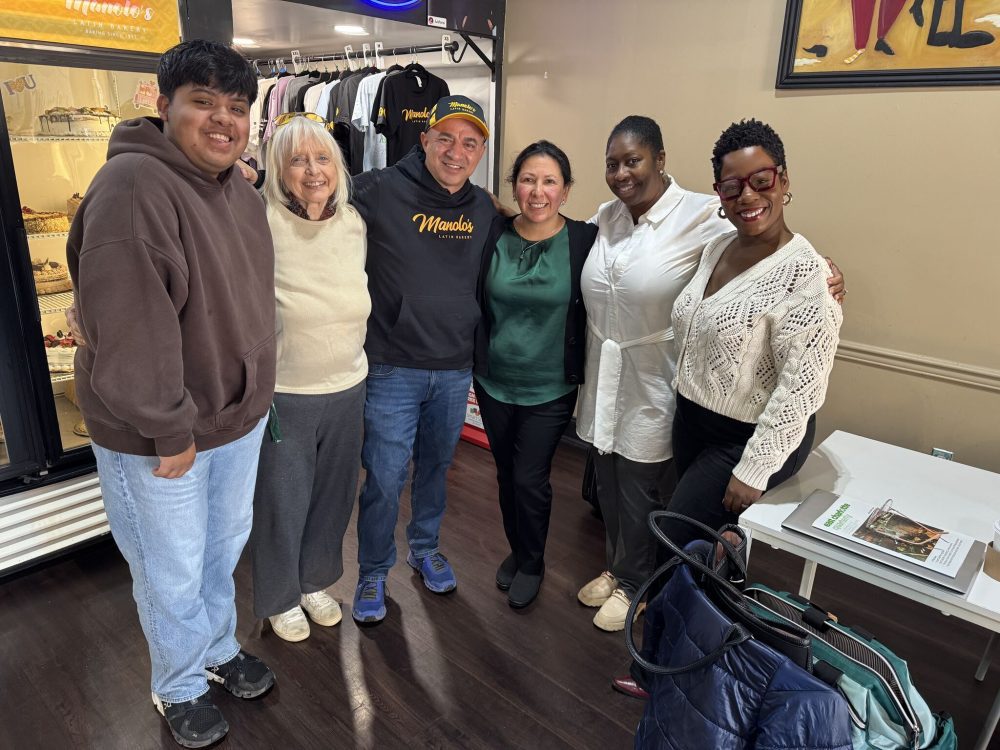Charlotte Innovation Incubator Moves East

by Mae Israel
On one end of adjacent shopping centers on North Sharon Amity Road in east Charlotte, an Ethiopian restaurant and grocery offers the spongy flatbread injera and a special cultural coffee ceremony. On the other is a Middle Eastern bakery and grocery, which sells several types of baklava and freshly baked pita bread.
In the middle is a Middle Eastern restaurant, an Asian-owned discount store and a Middle Eastern coffee shop and café. Across the street is a grocery specializing in Middle Eastern food.
This type of smorgasbord is common in east Charlotte, where a large, diverse population of immigrants from around the world have transported the flavors and traditions of their homelands, joining established neighborhoods of white and African American residents.
The Dichotomy of Diversity
This diversity of language, cultures, food and economics, say some residents, is an asset for east Charlotte, creating a dynamic area with an eclectic personality. But many also say it is too often viewed by those outside the community, and some who live there, as an identity that diminishes the image of the area and affects its access to resources, both public and private.
“There is a political will that is lacking to look at east Charlotte as something different from a working class center that provides a labor base to more affluent areas,” said Greg Asciutto, a former teacher who grew up in the area and now serves as executive director of CharlotteEast, a community group that promotes business development, education and other services.
Some residents point to the recent decision by District 5 City Council member Marjorie Molina to hold a town hall meeting in uptown Charlotte rather than in east Charlotte, saying it is a notable example of a tone deaf and dismissive attitude toward residents.
The question is “how do we have a more influential connection with elected officials and investors so that they are not operating out of a vacuum and our input is valuable,” said José Hernández-Paris, chief executive of the Latin American Coalition and a 45-year resident of Charlotte who came to the city from Colombia.
For many residents, a key challenge for east Charlotte neighborhoods is how to harness the complexities of a multicultural community to help residents develop a greater voice in how their community is developing and in how government and businesses respond to their concerns and requests for change.
A group of east Charlotte residents and experts from UNC Charlotte currently are tackling that issue.
Moving Beyond the Old Eastland Mall
The work of the Albemarle Road/Central Avenue Innovation Incubator begins as construction is underway at Eastland Yards, a multi-use development at the intersection of Sharon Amity Road and Central Avenue on the site of the former Eastland Mall.
Once the largest mall in North Carolina, Eastland closed in 2010. After city officials purchased the property a few years later, its development moved slowly and proposed plans later fell apart, leading to disappointment and frustration among many residents eager for a new community hub. A sports complex is now under construction at the 80-acre site, which also will include residential, retail and office space.
“We have been a dream deferred for years,” said Gerald Patton, a retired federal law enforcement officer who has lived in east Charlotte for 30 years within walking distance of the former mall. He is excited about the coming Eastland Yards project, he said, but feels residents have a history of being ignored.
“What’s already in place doesn’t work for us,” he said. “It requires a great deal of prodding and pressure. What is the best way to get our concerns heard? That‘s what we are working toward.”
The effort, some incubator members say, will be challenging, particularly since the political climate around immigration could impact the approach to developing a solution.
But the strength is “the willingness to create something for the community,” said Wendy Mateo-Pascual, a native of the Dominican Republic who runs a community engagement consulting firm and is co-owner of Pascuales Farm with her husband. “We can create a plan but the most important thing that we will create is collaboration to keep working on it.”
Inside the Innovation Incubator
The Community Innovation Incubator is part of a university initiative to work with residents in city-designated Corridors of Opportunity, where increased public investment is being directed to previously underserved areas. The initiative is based on a unique community engagement model in which residents take the lead in figuring out what to do in their community, with the university offering staff expertise and research capabilities.




Previously, efforts in the West Boulevard corridor led to a proposal for a co-op grocery store, which won financial backing from Mecklenburg County and private investors and is now under construction. In the West Sugar Creek area, residents developed a plan to create a wellness center. Plans are moving forward to house a center in a city-owned recreation center.
The award-winning initiative, funded by a $995,000 grant from Bank of America, will include all six of the Corridors of Opportunity. Work will begin next in the Freedom Drive/Wilkinson Boulevard corridor in west Charlotte.
According to the city’s designation, the Albemarle Road/Central Avenue corridor includes an area bounded to the north by freight rail near Shamrock Drive/Hickory Grove Road, to the east by Eastway Drive, to the south by Independence Boulevard and Idlewild Road and to the west by McAlpine Creek.
Its residents come from more than 60 counties and nearly 20 percent are foreign-born, according to city figures. The most recent data (2020) from the Charlotte-Mecklenburg Quality of Life Explorer, an online database sponsored by the city and county and compiled by UNC Charlotte, shows that Hispanic/Latino residents comprise 31.1% of the corridor, compared to 15.2% countywide.
The demographic breakdown of other residents is the following: 35.3% Black (countywide 29.1%), 20.9% white (countywide 44.6%) and 8.5% Asian (countywide 6.4%).
Household income and education levels are lower in the corridor than in other areas of Charlotte. The median household income in 2021 was $47,169 compared to $73,124 countywide. Only 21.2% of adults over age 25 had a bachelor’s degree or higher; 47.8% countywide had such degrees.
“There is no greater need, in my opinion,” said Asciutto, “than for the collective eastside to be more civically engaged and have tools to hold our elected officials accountable.”
The 21 members of the innovation incubator began meeting several months ago in a process coordinated by the university’s urbanCORE office, led by Byron White, Associate Provost for Urban Research and Community Engagement. Seven university professors in areas including sociology, social work, psychology and architecture are participating along with support staff.
Their early meetings focused on identifying this goal: “Create a process for informing community residents and capturing their insights on critical community issues that is inclusive and credible for all community members, and fosters more effective engagement with public institutions.”
They also participated in a two-day team-building exercise to increase familiarity and build trust among participants.
Incubator members recently split into groups to research seven areas as they work toward developing an innovative solution. These include: community priorities; community boundaries for their impact area; existing collective impact organizations; economic development data; the clarity of external perceptions and the collective narrative of east Charlotte; power mapping; and targeted asset mapping to determine which organizations and public and private investors contribute to the area.
They plan to propose an initiative in several months.
“There is so much that we need to figure out,” said Astrid Chirinos, senior director of advocacy and government relations for the YMCA of Greater Charlotte, a native of Venezuela and one of the founders of the Latin American Chamber of Commerce of Charlotte.
“We need to challenge the assumptions.”